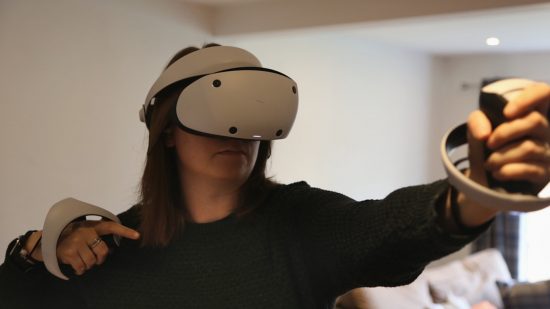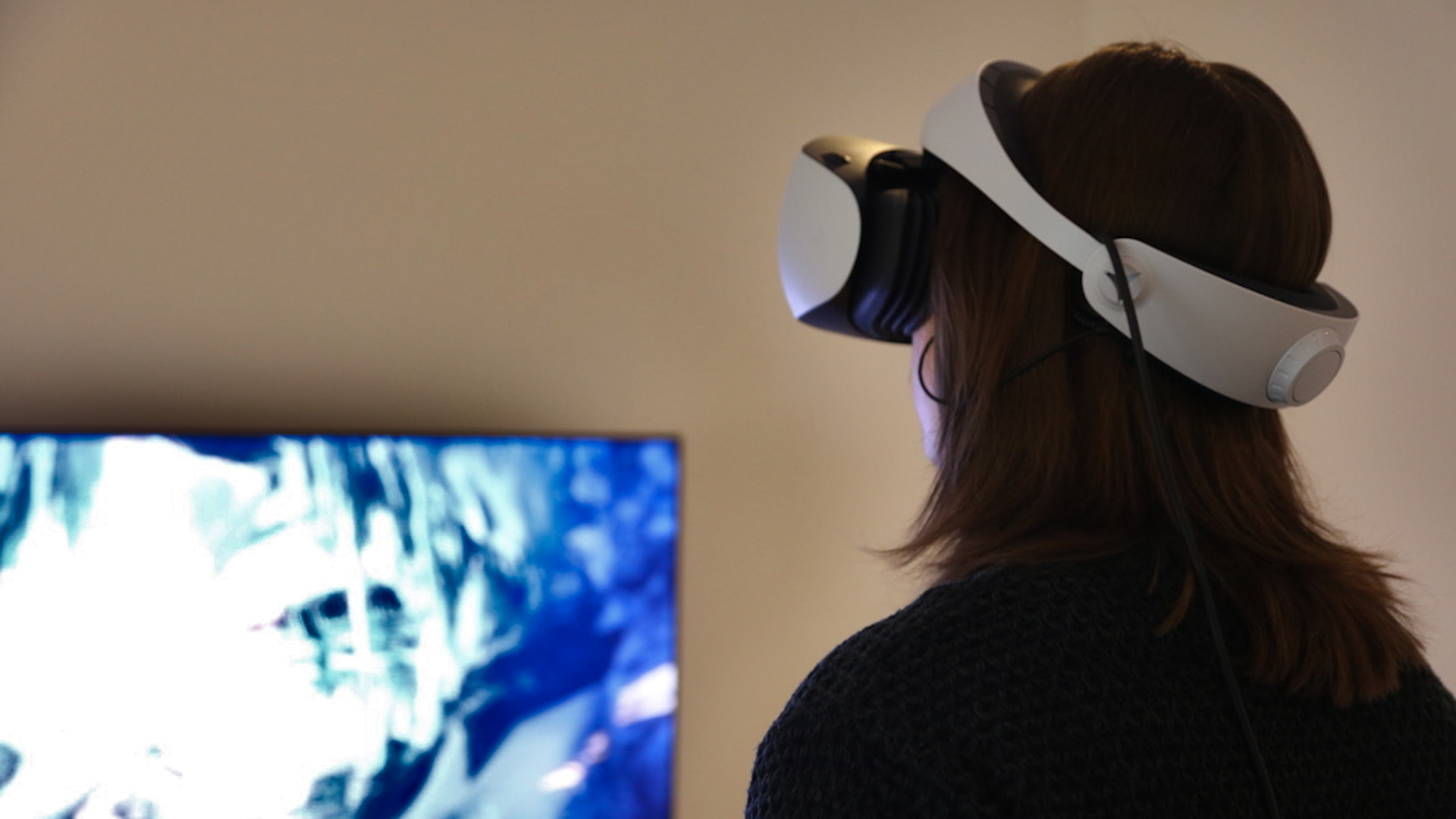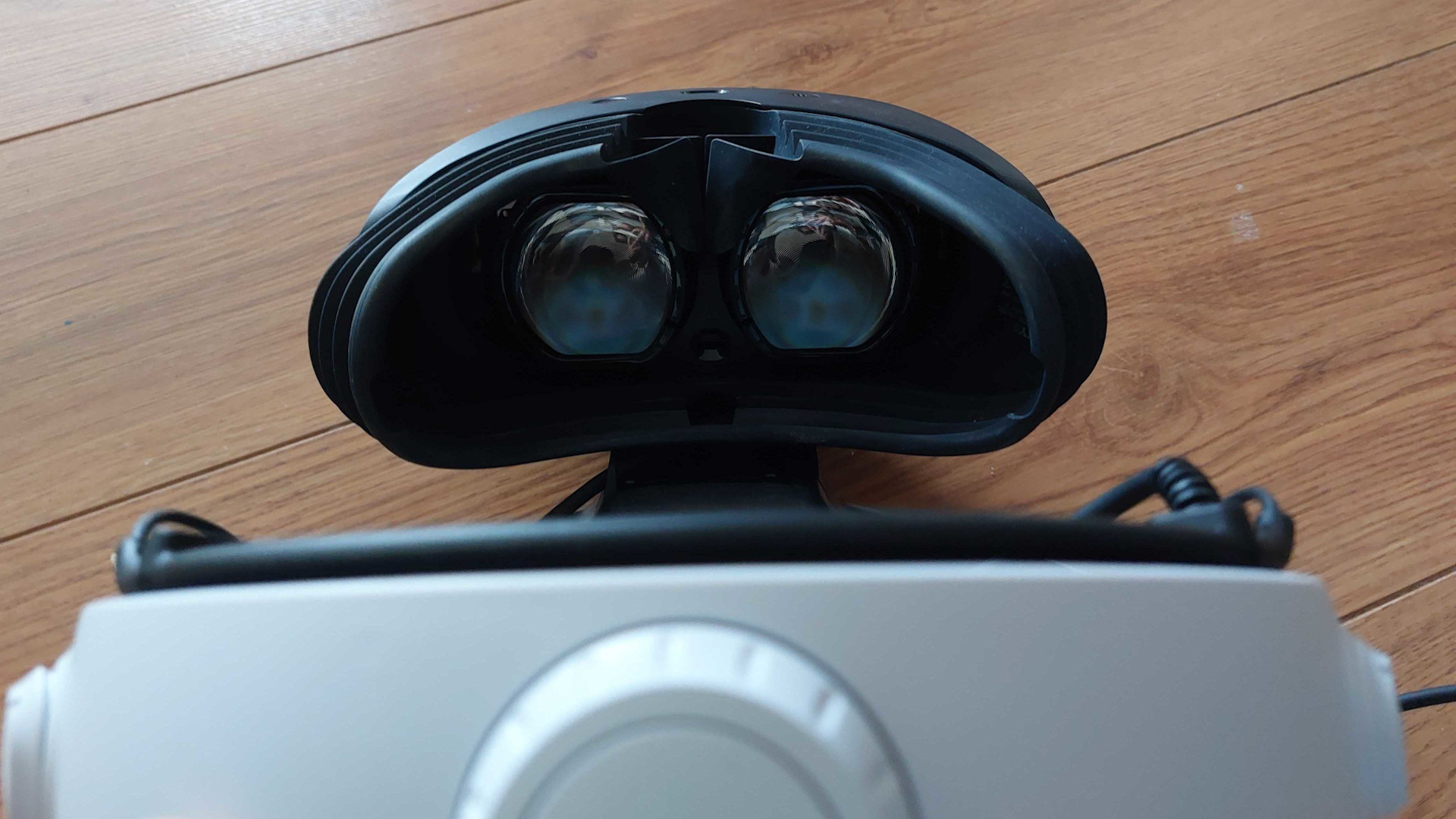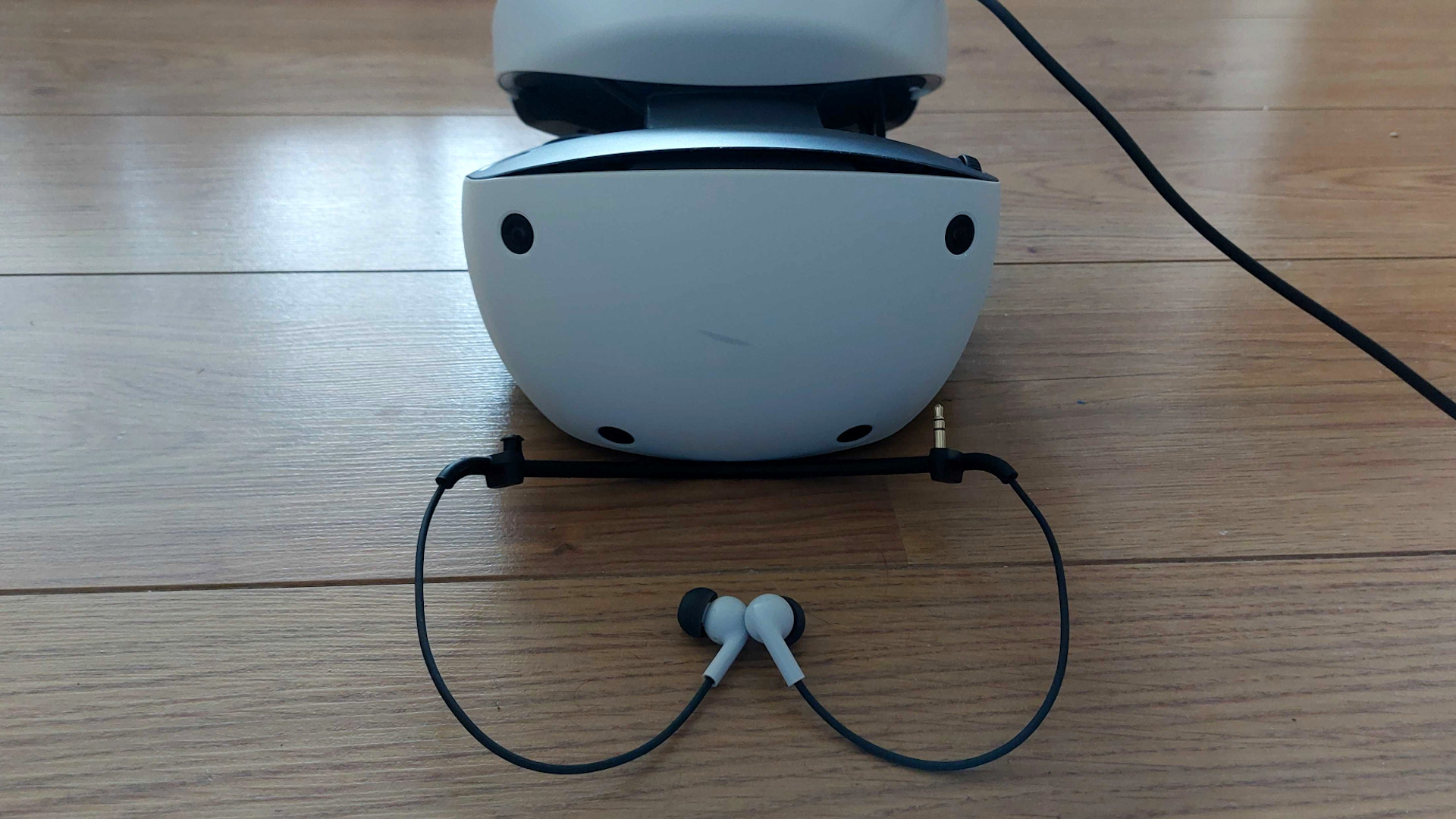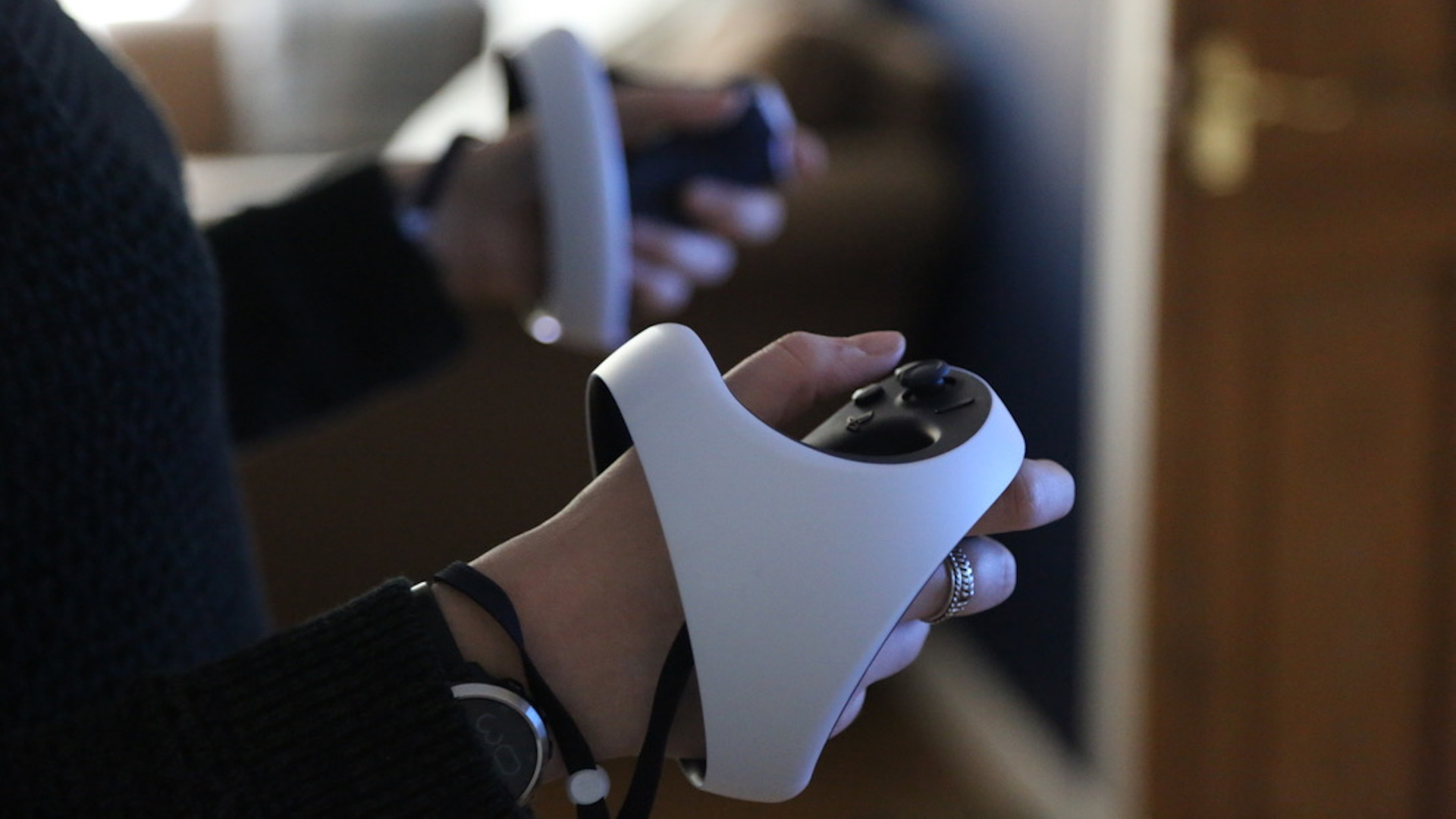Our Verdict
The PSVR2 promises to deliver next-generation virtual reality and it does just that with futuristic features that push the boundaries of VR as we know it. But with a lofty price tag, it might not be the VR revolution we all want and need.
Every year for the last decade we’ve had confident claims that this’ll be the year of virtual reality gaming. While we’ve seen a boom in VR games and hardware recently, the scene has generally failed to live up to expectations. However, with the PSVR2, Sony is promising to deliver the “next-generation of virtual reality gaming” by using the power of the PlayStation 5. And with major improvements over its predecessor, both in design and performance, it is clear that the PSVR2 is one of the best VR headsets out there right now – if you can afford it.
Retailing at $549.99/£529.99, it’s obvious that PSVR2 is priced at a premium, more hardcore audience. And when you look under the hood at the headset’s internals, that becomes even more clear. With 4K OLED HDR displays for each eye, which is a massive improvement over the 1080i in the PSVR, futuristic eye-tracking technology, and haptic feedback, nothing even comes close to it.

Over the course of my hands-on time with a it, I’ve played most of the best PSVR2 games and felt genuinely amazed by the headset’s capability. The worlds generated are rich, vibrant, full of colour, and more importantly, responsive. Sony has clearly listened to the criticisms levelled against the PSVR and taken care to address them for PSVR2.
Setup
One of those major criticisms was that the PSVR was a pain to set up. You had to plug a HDMI cable into the back of your console, which then connected to a processor box. From here using a passthrough port, you then hooked the box up to your TV, plugged it into a wall outlet, and then plugged your headset into the port. It was a nightmare to hook up, especially if you wanted to pack your PSVR away from time to time, and keep your play area free from wires.
The PSVR2, though, is pretty much plug and play. The headset just needs to be connected to the USB-C port on the front of the PS5 using a single cable and you’re good to go.
In fact, the whole set up process from unboxing to booting up took me about 20 minutes – and that includes the time I spent on calibrating my headset, setting my play zone, and setting up eye tracking. Once you’ve done that, all you need to do the next time you want to play a VR game is turn the PSVR2 on, strap it to your head, and you’re done.
The calibration and play zone set up was fairly easy too. The tutorial will walk you through the setup, explaining how to wear the headset, how to adjust it, and more importantly how to adjust the spacing for your eyes. You’ll also set up eye tracking here, which requires you to stand still and follow a moving dot around on both black and white screens. On the whole, the calibration was pretty accurate, but I did have to adjust it several times, especially where I felt my glasses move inside the headset during use – something I’ll talk about a bit more later.
Setting up the play area for the first time was also where I first saw the PSVR2 come into its own. I know that sounds strange, but when you’re used to manually walking around the room with a controller telling the headset where you can and cannot go, the eight cameras on the front of the PSVR2 do most of the legwork for you. And that’s because the headset scans the room around you.
It feels like magic the first time it does this and as boring as this makes me sound, I let out a little gasp when I saw my living room – in all its messy glory – through my headset. The PSVR2 worked out where I could feasibly play as I did a little 360, highlighting my play area in blue. While it was mostly accurate, I did adjust a few areas, mostly because I wasn’t sure the headset would actually reach around the side of my sofa, and I did that with ease by just poking the edges into shape.
Again, this play area is persistent, so you don’t need to adjust it if you don’t have to. You can change this (and the calibration of the headset) at any time by using the VR activity card in the menus.
Design
The PSVR2 feels oddly familiar to its predecessor. While it has a new lick of paint to make it feel more like a PS5 accessory, the headband feels almost identical. Using the button of the adjustable dial at the back of the headset, you can slip the PSVR2 over the back of your head, using the aforementioned dial to tighten the strap.
The back of the strap is cushioned, which is perfect considering the front of the headset bears most of the weight. Once I got my VR legs back, I was able to wear the headset for long periods of time, upwards of two hours, without feeling like it was giving me a headache.
The headband also fit perfectly around my head and glasses and I never once felt like the sides were pressing into my head. My glasses certainly made the visor less spacious, which I believe did impact my experience, but only by a little bit.
The visor is also adjustable using the scope adjustment button which allows you to push the visor closer or further away from your eyes. I found this to be particularly useful when I needed to check my watch or phone without the need to take my headset off.
Surrounding the visor is a soft black light shield. Previous complaints of the PSVR2’s predecessor included occluded vision, with light seeping into the headset. The shield fixes that problem, making sure you’re giving the perfect view of the world in front of you. You won’t see your floor while wearing the PSVR2 and the softness of the shield means you won’t really notice it on your face in the first place.
It’s a great little addition and one that helps with immersion – something that’s at the core of the PSVR2 and Sony’s promise to create a headset fit for the next generation.
Performance
While we could talk all day about the hardware under the big chunks of plastic, it means nothing unless you know how it actually plays. And for the most part, the PSVR2 runs without a hitch, giving you that next-gen VR experience.
The visual fidelity is one of the best I’ve experienced in a VR headset. The upgrades to the internals were particularly noticeable in PSVR2’s flagship game, Horizon Call of the Mountain. While I’m not a fan of wired headsets normally, it works for the PSVR2 because you’re able to experience beautiful, highly-detailed worlds in all their glory.
In Call of the Mountain, I spent more time than I care to admit picking up objects like plates, hammers, snowballs, and maracas just to see what they could do. I was amazed that I could lob a plate off the edge of the mountain and watch as it fell hundreds of metres below me, twisting and twirling in the wind. Never once did I feel that the draw distance was compressing the graphics or making the headset stutter.
I had the same experience in other games too. Kayak VR, which has easily become one of my favourites out of the launch line-up, allows you to explore these almost photo-realistic versions of Costa Rica, Australia, and more. Thanks to the power of the PSVR2, I am able to do just that without any major interruptions.
Where I did fall foul of problems was in the calibration department – although, I’m fairly sure this is down to the fact that I wear quite big glasses. In Call of the Mountain, I had to recalibrate my lenses manually a few times because it felt like some parts directly in front of me were out of focus. It felt a bit like when your contact lens goes walkabouts in your eye, leaving you with one perfectly focused view and one slightly blurry one.
It’s important to note that this was for things directly in my line of sight. PSVR2 only renders the thing you’re looking at ostensibly to keep the image quality in tip top condition, so not seeing things directly in front of me was a bug, not a feature. Still, a quick recalibration fixed the problem and helped me centre my headset again.
The only reason I can think of for this is that my glasses sit too close to the lenses – or perhaps not level to them – creating a distorted view. It’s certainly frustrating not to have it work perfectly the first time, but a single calibration in a session is all it takes to rectify it, so it’s not exactly a deal breaker for me.
What did work though, despite the foible with my specs, is the eye tracking technology. And this is one of the PSVR2’s best features. It might not seem like much at first glance because you quickly become accustomed to it, but being able to look around your environment without pressing a single button or moving your head is genuinely game changing. Plus, some games have even built mechanics around the feature.
And if you don’t like it or you have a visual impairment that isn’t compatible with eye tracking, then you can just turn it off in the game’s menus.
The last major features that add that “next-gen” experience are the adaptive triggers in the Sense controllers and the haptic feedback you get from both the controllers and the headset. As with all things haptics, I find the rumble you get a little underwhelming, but I will say it definitely adds something special to a game like Call the Mountain when you can physically feel a machine walk or fly behind you.
The same can be said about the adaptive triggers. Often a feature that feels a tad gimmicky on the DualSense controllers, the adaptive triggers really do help remove the physical barriers of games. Not only can you see yourself in this world; you can physically feel it too. In the middle of a boss fight in Call of the Mountain, you can feel the tension in your bow as you draw the arrow, just as much as you can the physical presence of a lumbering Thunderjaw.
Sound
What breaks the immersion, though, is the sound quality of the bundled-in headphones. These earbuds, which come as standard with any PSVR2 order, attach to the underside of the headset. This is a neat little feature and stops you getting tangled up in wires, but the quality of them are sub-par.
It’s very disappointing given that Sony has put such a focus on high-quality 3D sound with this generation. I found myself opting to play games with the sound blaring out of my home entertainment system simply because the quality was better. But even then, it broke the immersion of virtual reality.
I’ve since discovered that the PSVR2 works perfectly with the Pulse 3D – Sony’s flagship wireless headset. While I don’t own a pair to test them with, Henry Stockdale, who’s reviewing the headset for UploadVR, confirmed that the headset offers better sound quality than the earbuds it comes with.
Given the price point of the PSVR2, I can’t help thinking that this is a little cheeky. One of the major criticisms of the original headset was that the headset didn’t come with the accessories it needed for it to operate. Although we have a fully operational headset that’s practically plug and play this time around, it feels that Sony’s on a mission to upsell us on accessories.
This was made ever clear when I opened the box to find just one USB-C cable to charge the Sense controllers. While I’m aware that the PS5 comes with a cable for the DualSense, only including a single cable when you need two to charge the controllers seems a bit short sighted – even if they do hold their charge for about the same time as the DualSense controllers. You can solve this problem by buying the Sense charging station – for an additional $49.99 / £39.99, of course.
It’s all well and good having these premium accessories, but the standard ones that come with the headset should be good enough in the first place.
Tracking
One of the major changes to the PSVR2’s design was the replacement of the Move wands for controllers that closely resemble those found in traditional VR units. The Sense controllers, which are ergonomically shaped to fit in your hands, are basically a DualSense controller split in half.
They each have capacitive sensors in them that help track your movement and, more specifically, your hand gestures. While it’s not 100% accurate, I noticed, for the most part, that the Sense controllers were able to replicate my movements. I was able to point finger guns at Aloy with decent success, give a thumbs up to a dolphin, and wave at a Scrapper.
Why is this important? Because it shows how far the controllers have come in seven years. It brings the PSVR2 in line with the likes of the Quest 2, and proves that the headset can track almost anything. The four cameras slapped on the front of the headset and the six motion sensors certainly help with that too.
In all the hours I’ve played with the headset, I’ve never really encountered physical tracking problems. Admittedly, a lot of the games I’ve played so far haven’t required me to move my feet much, but even when I have shuffled a little off-centre, the PSVR2 has tracked my every move, reminding me on occasion that I’m closing in on my play zone boundaries.
In those instances, a quick switch to functionality mode, which essentially turns the cameras on so you can see the room around you, is all you need to make sure you’re not going to punch a wall, or worse, your TV.
Where the headset does struggle is in low lighting conditions. My PS5 is set up in my living room with only a window on the other side of the room to give natural light. In the morning, I found my gameplay sessions would go largely uninterrupted, but past noon, as the sun passed over my house, my sessions were interrupted by an error message in functionality mode. The only way to return to virtual reality is to improve your light source and, in my case, that means turning on the living room lights.
This is a huge departure from the original headset, which you could play in complete darkness, so if you’re looking to upgrade and play in the day, make sure you’ve got a good source of light.
Price
The price point is the PSVR2’s biggest problem in my eyes. While Sony has certainly learned a lot in the seven years between PSVR and PSVR2, it’s worth noting that the industry itself hasn’t seen much growth. The Quest 2 – arguably the best headset for newcomers, especially since it has PC compatibility – has sold 15 million units since its release in 2020, which suggests the industry is still a little way off from being considered mainstream.
While the PSVR2 is certainly looking to innovate further and bring people in with the promise of 4K VR gaming and on console, Sony isn’t going to set the world alight with upfront costs of $549.99/£529.99.
And Sony knows it too. In recent weeks, the company has slashed its shipment forecast, noting that it expects to sell just 1.5 million units between now and March 2024. It’s hardly a huge number, and while there are many external factors to take into account, like the ever-rising cost of living worldwide, Sony faces a huge uphill battle to turn this incredible bit of kit into the VR conqueror it deserves.
Verdict
While the PSVR2 isn’t perfect, it truly is a special bit of kit. With stunning visuals, innovative features that enhance the immersive experience, and plug in and play functionality, it offers one of the best VR experiences out there at the moment.
Sure, it has its shortcomings, but they can all be forgiven when you consider what the PSVR2 offers. The earbuds might not offer the crisp 3D audio we’re all accustomed to these days, but they can be replaced by a set of stereo cans of your choice. The calibration can be a bit funky sometimes but it can be fixed with a click of a button, and it rarely impedes your experience.
The only thing I will say is that the PSVR2 ultimately lives and dies by its offerings. While the launch line-up features exceptional games like Call of the Mountain, Cosmic Smash, and Resident Evil Village, PSVR2 needs to have ripe offerings if it’s to be successful in the long term, especially given that it’s not backwards compatible.
On the whole though, PSVR2 is a huge improvement when you consider it’s Sony’s second foray into virtual reality. While the headset’s lofty price tag won’t spark a VR revolution just yet, it does what it sets out to do and that’s provide PS5 users with a next-gen virtual reality experience.
